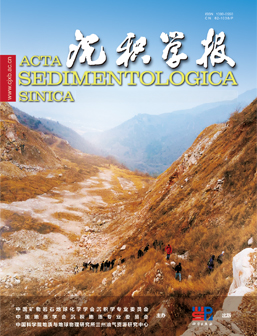Sedimentary Characteristics and Evolutionary Patterns of the Carbonatite-evaporite Syngenetic System: A Case Study of the Gaotai Formation in eastern Sichuan Basin
doi: 10.14027/j.issn.1000-0550.2024.024
- Received Date: 2023-08-03
- Available Online: 2024-04-09
-
Key words:
- Key words: Eastern Sichuan Basin /
- Cambrian Gaotai Formation /
- Carbonatite-evaporite Syngenetic System /
- Sedimentary characteristics /
- Sedimentary evolution
Abstract: 【Objective】The carbonate-evaporite syngenetic system is widely distributed in the Cambrian of the Sichuan Basin, however, the developmental characteristics, depositional environments, depositional processes, and evolutionary modes of this syngenetic system are weakly studied, and the research methods need to be clarified urgently. 【Methods】The petrological characteristics of the symbiotic system, the state of the evaporites, the depositional environment of the symbiotic system, the depositional process and the evolutionary pattern of the symbiotic system are investigated based on the data of drilling cores, field sections, rock sheets and carbon and oxygen isotopes, and the isotopic signatures of Fe, Mn and S. 【Results】The results show that 1) the developmental characteristics of the symbiotic system, 2) the depositional environment, and 3) the evolutionary pattern of the symbiotic system are not well understood, but are not well understood. The results show that: 1) the carbonate-evaporite symbiotic system in the study area has developed five kinds of carbonate-evaporite symbiotic system rock assemblage sequences, including: carbonate rock and evaporite interbedded, evaporite sandwiched with carbonate rock, evaporite overlain carbonate rock, carbonate rock overlain with evaporite rock, and carbonate rock sandwiched with evaporite rock. 2) the geochemical features of the symbiotic system, including δ18O, mainly concentrated in -8‰~-9‰, and δ13C, mainly concentrated in -8‰~9‰; δ13C is mainly concentrated in -1‰~3‰; the results of using carbon and oxygen isotope values to calculate palaeosalinity and palaeotemperature show that the vast majority of Z values>120‰ and δ13C values>-2‰, and the palaeoseawater temperatures are in the range of 23.10~40.64℃; Fe is mainly concentrated in the range of 0~2000×10-5; and Mn is mainly concentrated in the range of 10-5~30×10-5, which indicates that in the Gautai Group During the Gaotai Formation, the depositional environment was a warm or hot paleoclimate and saline seawater environment, with a high degree of oxidation of the water body, and the rock-forming action in a relatively open system related to atmospheric water was experienced.3) Deposition of marine carbonate rocks and evaporites in a symbiotic system against the background of an arid and hot climate and a Ca-rich and low-SO4 calcite sea with a high degree of salinity The period of time can be divided into the sea level falling evaporite - dolomite deposition stage and sea level rising dolomite - evaporite - greywacke deposition stage; "tidal ping Sabuha mode" and "underwater condensed deposition mode" are two kinds of carbonate rock - evaporite symbiosis system development mode.【Conclusion】The carbonatite-evaporite symbiotic system carries the information of paleoenvironment, paleoclimate and paleohaline water chemistry during the depositional period, and also records the depositional process and evolutionary pattern of the symbiotic system. This study provides new ideas and understanding of the depositional environments and depositional patterns of the carbonatite-evaporite symbiotic system of the evaporitic environment of the marine phase of the Cambrian Gautai Formation.
| Citation: | Sedimentary Characteristics and Evolutionary Patterns of the Carbonatite-evaporite Syngenetic System: A Case Study of the Gaotai Formation in eastern Sichuan Basin[J]. Acta Sedimentologica Sinica. doi: 10.14027/j.issn.1000-0550.2024.024 |






 DownLoad:
DownLoad: